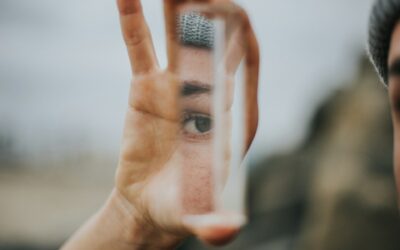Most of us try our best to take care of our eyes. When something comes close to our faces that might hit us, we immediately shut our eyes and turn our faces away to protect them. Even with caution, however, injuries to our eyes still happen and these often affect the clear front of the eye, the cornea. Below is explained how injuries to the cornea commonly proceed, what treatment for them entails, and some ways to prevent their occurrence and recurrence.
Types of Eye Injuries
When an injury occurs to the cornea that scratches its surface but does not pierce it, this is called a corneal abrasion. There will be immense pain when this occurs and likely some light sensitivity will develop afterwards as well. The cornea can heal very quickly, within a couple of days depending on the size, when this happens, but steps must be taken to ensure that this healing proceeds normally. Scratches can also occur as a result of debris lodged under the upper eyelids, and these must be removed.
Sometimes, a small bit of a fast moving object can enter into the cornea and embed itself there. This can be a piece of metal, wood, dirt, etc. The cornea is tough and can often stop these foreign body projectiles, but they must be removed to prevent scarring and further damage. If the cornea is completely pieced or perforated, more complex surgical treatment may be required depending on the extent of damage deeper in the eye and on how large the entrance hole is.
Regardless of the source of the injury, corneal trauma carries a secondary risk. The wound itself heals quickly, but requires months to completely reattach to the underlying tissue. This means that the area that was injured has an increased sensitivity to further damage and may spontaneously lift up with the eyelids when first waking in the morning, reopening the original injury site. This is called recurrent corneal erosion.
Corneal Abrasion Treatment
Our eye doctors will usually either put on antibiotic eye drops in office or prescribe them to prevent infection of the injury. If something is stuck in the eye, it will be removed if possible after the eye has been numbed with eye drops. This can be done with various metal tools like forceps or tweezers and tiny hockey sticks, or with motorized drills that gently scrape off dirty tissue.
If there is nothing in the eye, the loose edges of a corneal abrasion may be manually removed to quicken healing. If the wound is large, a bandage contact lens may be put on your eye to shelter it while it recovers, then removed after a few days.
Other drops may be used depending on how inflamed the eye is, such as corticosteroid eye drops to reduce inflammation or painkiller eye drops if you are in a great deal of pain. Drops that dilate your pupils help both with pain and with speeding healing of inflammation within the eyes.
How to Prevent Corneal Abrasions and Eye Injuries
Our eye doctors at Eye Theory in Houston, TX excel in the prescription of contact lenses, glasses and various eye diseases. Call our optometrist at 832.831.7386 or schedule an appointment online if you would like to learn more about corneal abrasions and other eye injuries. Our eye doctor, Dr. Jonathan Tsao, provides the highest quality optometry services and eye exams in the Midtown, Downtown, Museum District, and Southside Commons (Southside Place) vicinities of Houston, Texas.





